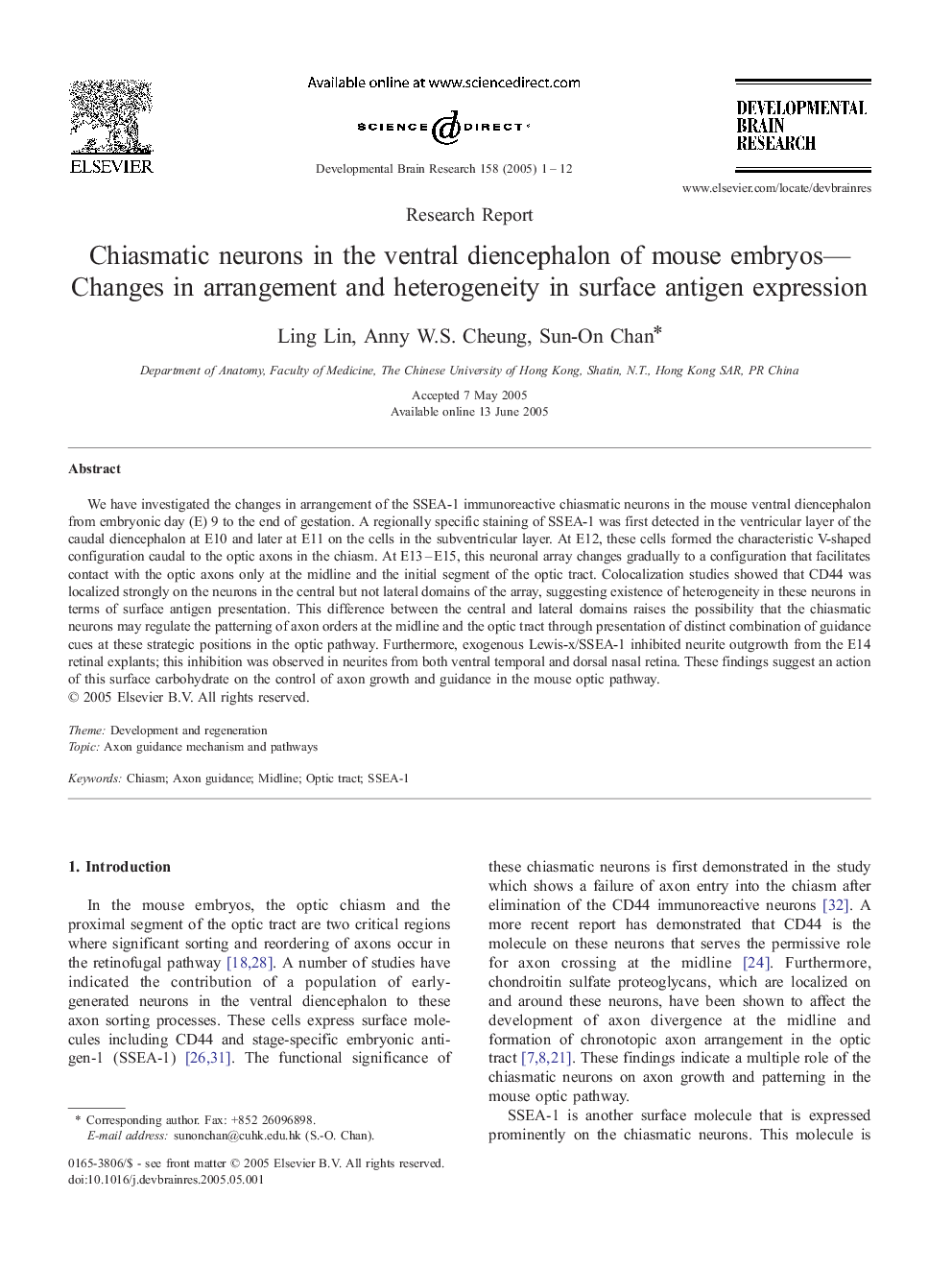| Article ID | Journal | Published Year | Pages | File Type |
|---|---|---|---|---|
| 9414509 | Developmental Brain Research | 2005 | 12 Pages |
Abstract
We have investigated the changes in arrangement of the SSEA-1 immunoreactive chiasmatic neurons in the mouse ventral diencephalon from embryonic day (E) 9 to the end of gestation. A regionally specific staining of SSEA-1 was first detected in the ventricular layer of the caudal diencephalon at E10 and later at E11 on the cells in the subventricular layer. At E12, these cells formed the characteristic V-shaped configuration caudal to the optic axons in the chiasm. At E13-E15, this neuronal array changes gradually to a configuration that facilitates contact with the optic axons only at the midline and the initial segment of the optic tract. Colocalization studies showed that CD44 was localized strongly on the neurons in the central but not lateral domains of the array, suggesting existence of heterogeneity in these neurons in terms of surface antigen presentation. This difference between the central and lateral domains raises the possibility that the chiasmatic neurons may regulate the patterning of axon orders at the midline and the optic tract through presentation of distinct combination of guidance cues at these strategic positions in the optic pathway. Furthermore, exogenous Lewis-x/SSEA-1 inhibited neurite outgrowth from the E14 retinal explants; this inhibition was observed in neurites from both ventral temporal and dorsal nasal retina. These findings suggest an action of this surface carbohydrate on the control of axon growth and guidance in the mouse optic pathway.
Related Topics
Life Sciences
Neuroscience
Developmental Neuroscience
Authors
Ling Lin, Anny W.S. Cheung, Sun-On Chan,
